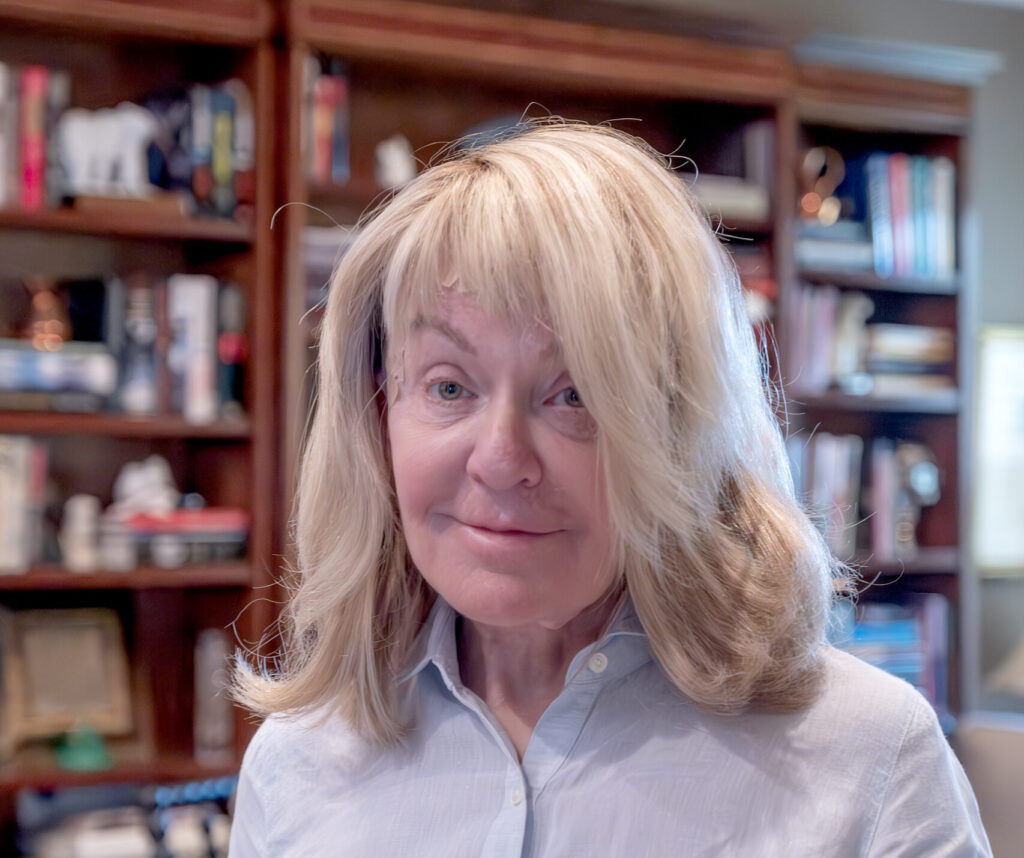Resin artist Pat Willis discovered her passion for art amid a period of her life that was comprised of loss, creativity and community.
Originally from Bridgeport, Conn., Willis had a nearly 30-year career working in sales for Hallmark Cards before retiring. Afterward, she and her husband Michael had plans to move to Florida, until he was diagnosed with pancreatic cancer. Sadly, he passed away before the couple was able to start that new chapter of their lives together.
Recognizing that she needed something to keep her busy while helping to heal her soul, she turned to artwork.
“I started noodling around with resin and acrylics. I liked resin because it was shiny,” she remembers.
A chance encounter in New Jersey with longtime friend John Stringer, co-owner with Caesar Mistretta of the J. M. Stringer Gallery of Fine Art in Vero Beach, promoted a return to the idea of moving to Florida.
Willis explains that as Stringer knew that she had been a drama major in college, he also knew where her interests lay.
“He said, ‘You’ve got to come to Vero; art, theater, art, theater, art, theater,’” she recalls.
“When I moved down here, I found very supportive people.”
As Henri Matisse expressed, “Creativity takes courage.”
In her case, Willis found the courage to deepen her creative arts process after moving to Vero and being welcomed into its burgeoning arts community. She joined the Vero Beach Art Club and began volunteering at the Vero Beach Museum of Art and fully immersing herself in the local art scene.
Reflecting on her artistic journey, she credits online videos for educating her about the various techniques she employs.
“YouTube taught me a lot of stuff about resin. Things like getting the colors on the canvas and manipulating the canvas so that things move and flow. I learned a lot from other people’s mistakes,” she says.
Artists who work with resin appreciate its versatility when it’s applied to diverse types of surfaces, as well as the flexibility of the medium, which enables the artist to apply a mix of techniques and styles.
Despite the wealth of online resources, Willis says she believes that her mastery of resin art has been a personal journey of exploration.
“Learning to work with resin is not something you can be taught. It’s a feeling. You just have to do it,” she explains.
Referencing one piece of artwork, she discloses, “That’s actually three pieces. I didn’t know what to do with them once I had them done. Then, it all came together for me.”
Willis explains that she starts the process with a clear resin and then adds color and hardener to it.
“I love color, and I love the way I can get the colors to come. It’s just fun pushing stuff around. Sometimes it works, and sometimes it doesn’t. You have to mix it in the proper ratio. If you don’t, it will never harden no matter what you do,” she explains.
“Sometimes, it’s a happy mistake.”
Willis describes one instance when she left what she thought was a nearly dry canvas leaning against a bookcase in the basement overnight. When she returned the next day, the resin had slid off the canvas and onto the floor, creating an unexpected sculpture.
Normally, she explains, she creates sculptures by pouring the resin in a circular puddle onto a piece of plastic. Then, she drapes the slightly hardened piece over something else that will give it a shape, such as a cardboard tube.
“Then it will start to flow downward. I don’t guide it. I just let it go,” she says.
The fluidity of the resin, which moves slowly, much like a lava flow, lends itself to the creation of imagery that reminds the observer of subjects that occur naturally, such as water and flower petals. As no two pieces are ever alike, they are also not something that can be replicated.
Although, as with all her works, “it’s all about the colors,” Willis says the process is a bit different when working on a canvas, which she first paints using acrylics.
“I just pour the resin onto the wet paint and try to keep the colors separate so it doesn’t turn into mud. Everything starts moving. You really don’t know what it’s going to be when it sets.
It’s always a surprise. Mostly a nice surprise,” says Willis.
Her specialty tool for moving the resin around? She has found that old credit cards and plastic hotel keys work best because the resin doesn’t stick to them.
Sometimes, Willis says, she elects not to move the resin at all, so that it preserves the paint in situ.
To add texture and dimension, she sometimes adds items to a piece, such as shells, sand or even gold leaf, depending what she wants the final product to be.
Willis also creates three-dimensional pieces using molds, such as for coasters, or placemats, or to create jewelry. There, resin is poured in layers, along with any imbedded embellishments.
Willis has been exhibited at the Players Club in New York City and in Vero Beach, including at the Artist Guild Gallery, Art by the Sea and the Vero Beach Art Club’s Members Invitational. Through the Cultural Council’s Art in Public Places initiative, her work has been shown at the Intergenerational Center and the Indian River Administration Complex. Willis is a member of the Vero Beach Art Club and is the board secretary of the Cultural Council of Indian River.
Photos by Joshua Kodis

